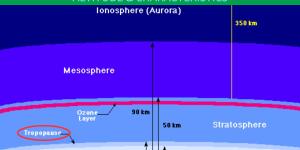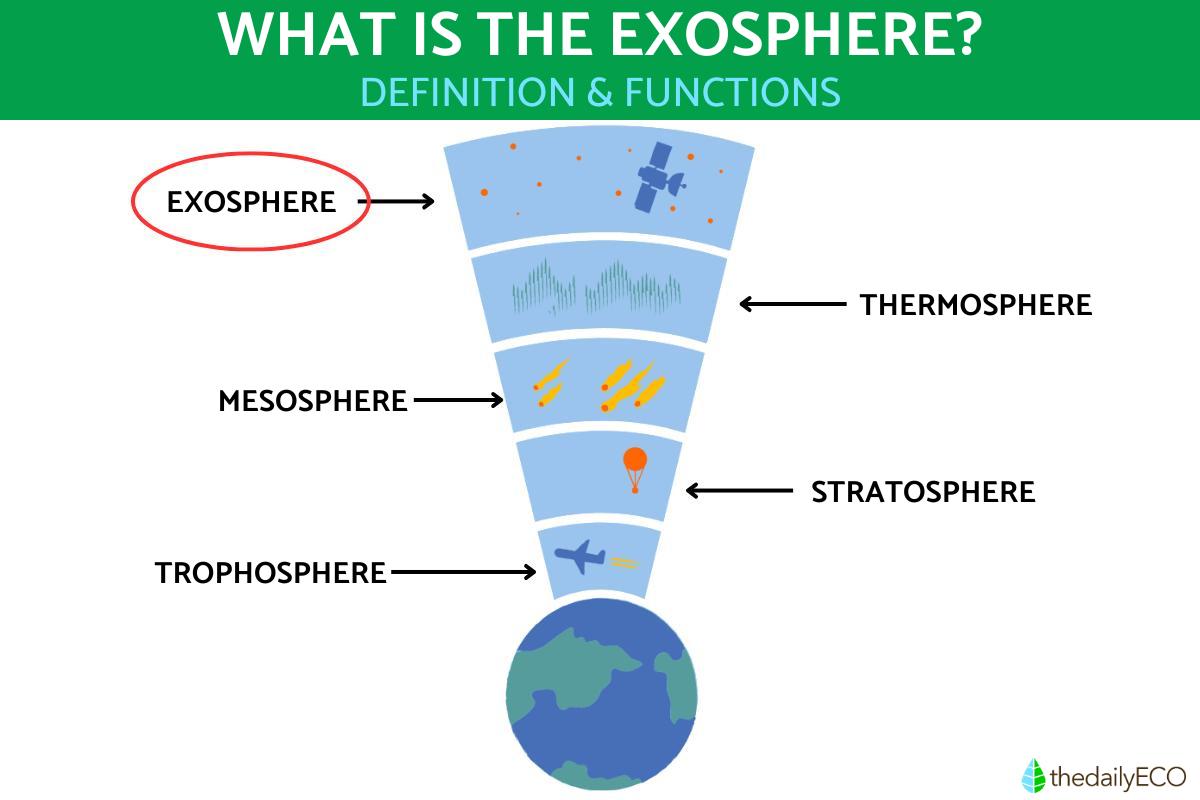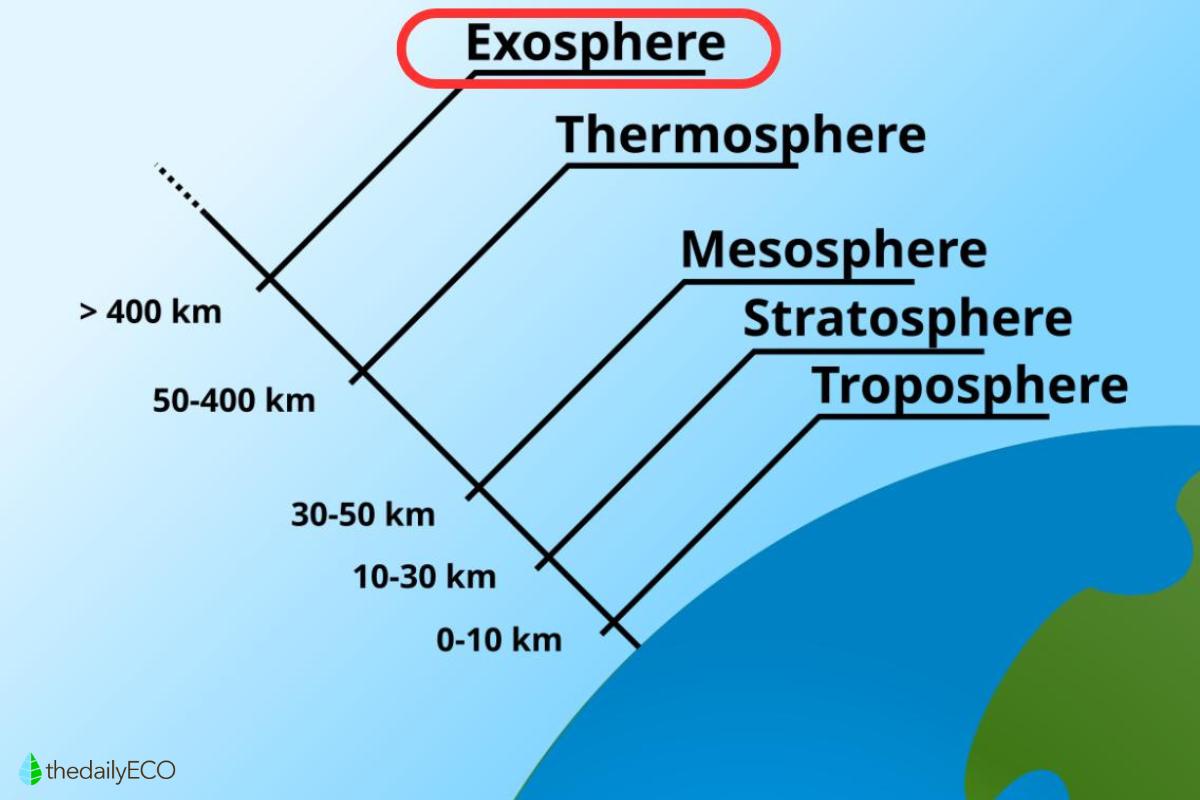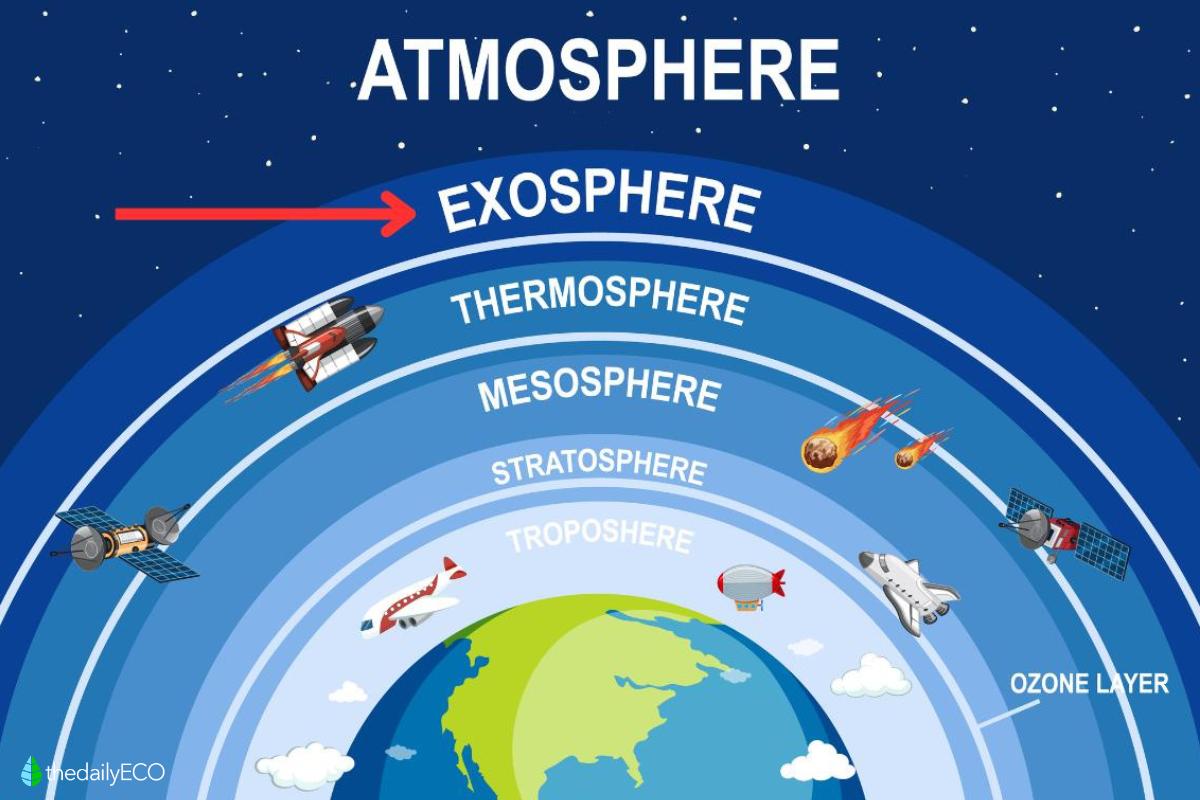What Is the Exosphere and What Does It Do?


The exosphere is the outermost layer of the a planet's atmosphere. On our planet, it is begins 500 310 miles from the surface of the Earth and extends gradually until it blends with outer space. Characterized by its low density and particle dispersion, this region acts as a transition zone between the Earth and space. Some scientists and astronomers do not consider it a distinct layer of our atmosphere. We better understand its definition and characteristics as thedailyECO asks what is the exosphere and what does it do?
What is the exosphere
The exosphere is the outermost layer of the a planet's atmosphere, including our planet Earth. It lies above the thermosphere and has no clearly defined outer boundary since it gradually merges with outer space. This region begins at approximately 310 miles (500 km) of altitude, although this can vary depending on the conditions on Earth and the Sun.
Gas particles are so far apart in the exosphere that they barely interact. In fact, many of these particles have enough speed to escape Earth's gravity and get lost in space. For this reason, it is not considered a strictly atmospheric environment, but rather a transition zone between Earth and space.
Learn about a layer which we can definitely call part of the Earth's atmosphere with our article asking what is the mesosphere?
Characteristics of the exosphere
Now we have a basic definition of the exosphere, we can better understand it by looking at its characteristics:
- The exosphere begins at approximately 310-620 miles (500-1,000 km) above the Earth's surface and can extend to 6,200 miles (10,000 km) or more. However, its upper limit is not clearly defined, as it gradually merges with interplanetary space.
- It is composed mainly of light elements such as hydrogen, helium and small amounts of oxygen and carbon dioxide.
- In this layer, gas molecules are so far apart that it can be considered a near vacuum. Atmospheric pressure in the exosphere is virtually non-existent, which sets it apart drastically from the lower layers of the atmosphere. Although particles in the exosphere can reach very high temperatures due to their high kinetic energy, this heat would not be felt like it is on Earth. This is because the density is so low that there are not enough particles to effectively transfer heat.
- Gas particles in the exosphere follow very long and random trajectories. Many manage to escape Earth's gravity into outer space, in a phenomenon known as atmospheric escape.
- The exosphere acts as a barrier between Earth and space. In this region, the solar wind can interact directly with particles in the Earth's atmosphere, generating effects such as the erosion of atmospheric gases. It is also the area through which many communication signals and orbiting satellites pass.
Discover more with our article asking what is the composition of the atmosphere?

What does the exosphere do?
Although the exosphere is the thinnest and least dense layer of the atmosphere, it performs important functions in the context of the Earth and its interaction with space. To understand what does the exosphere do, we better understand the exosphere functions:
- Transition zone to space: the exosphere acts as a border region between the Earth's atmosphere and outer space.
- Shield against solar wind: although the solar wind mainly interacts with the magnetosphere, some charged particles in the exosphere also encounter the light gases of this layer.
- Regulation of atmospheric escape: many particles in the exosphere have enough energy to escape Earth's gravity. However, the exosphere regulates this process by acting as a filter. Not all particles manage to escape into space, which helps to conserve part of the atmosphere.
- Satellite and communications support: many telecommunications, GPS and Earth observation satellites orbit in this layer. Its low density allows satellites to maintain their orbital speed without suffering significant energy loss due to atmospheric friction.
- Interaction with signals and waves: many radio and communications signals pass through the exosphere, making it a key medium for transmission technologies.
What happens in the exosphere?
Despite the fact that the exosphere is an extremely tenuous and almost empty region, we have already seen that some interesting phenomena occur. These are mainly related to its interaction with outer space and the particles it contains. Let's analyze some of the most important goings on in the exosphere:
- Atmospheric escape: this is the result of particles escaping into space because they have enough energy to overcome the Earth's gravitational force. Although the loss is small relative to the total atmosphere, it has long-term implications for the planet's atmospheric composition.
- Interaction with the solar wind: these interactions can contribute to the escape of atmospheric particles and to phenomena related to the Earth's magnetic field, such as auroras. Learn more with our article on what are the Aurora Australis?
- Particle dispersion: due to the low density of the exosphere, particles that reach this layer have long and disordered trajectories. These particles move freely and many end up being expelled into outer space. Others return to lower layers due to Earth's gravity.
- Satellites and space debris: satellites and space debris orbit the exosphere and may experience slight effects due to particles dispersed in this region.

Why is the exosphere important?
Although it is the thinnest and least dense layer of the Earth's atmosphere, the exosphere is of great importance. This is due to the following reasons:
- Protection of the lower layers: part of the effects of the solar wind and high-energy particles begin to dissipate in the exosphere, preventing them from directly affecting the Earth's surface or the densest layers of the atmosphere.
- Regulation of atmospheric escape: the exosphere acts as a filter for gas particles trying to escape into space. This slow, but constant process helps maintain the stability of the Earth's atmosphere and regulates the loss of essential elements, such as oxygen and nitrogen. These are fundamental for life on the planet.
- Support for satellite technology: this layer of the atmosphere is essential for the operation of technologies such as GPS, telecommunications and weather forecasting.
- Relevance to space weather: the exosphere is a zone where the effects of space weather, such as solar storms and variations in the solar wind, can be detected and investigated. This can protect both technological infrastructure in orbit and electrical networks and communication systems on the surface.
Discover more about how our upper atmosphere affects things down on Earth with our article asking what is general atmospheric circulation?
If you want to read similar articles to What Is the Exosphere and What Does It Do?, we recommend you visit our Facts about Earth and the universe category.
- Exosphere: importance, characteristics and height of the layer. Solar Energy.
https://solar-energia.net/sistema-solar/tierra/capas/capas-atmosfera/exosfera







